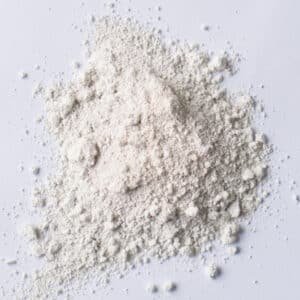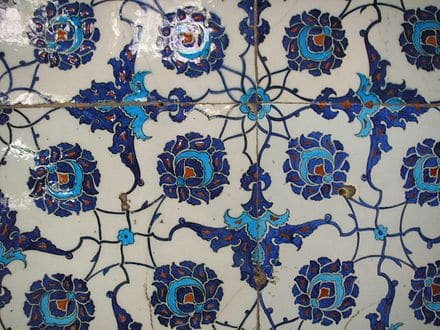Zirconium silicate supplies ZrO2 and SiO2.
An inexpensive opacifier that produces cool white colors and helps to flux high-temperature glazes. More stable than tin oxide in reduction.
Only about half as effective as tin as an opacifier; generally requires 5% for some opacity, up to 15% for complete opacity.
Prepared from natural zircon sands. Sold under various trade names.
From Wikipedia:
Zirconium silicate is used for manufacturing refractory materials for applications where resistance to corrosion by alkali materials is required. It is also used in production of some ceramics, enamels, and ceramic glazes. In enamels and glazes it serves as an opacifier. It can be also present in some cements. Another use of zirconium silicate is as beads for milling and grinding. Thin films of zirconium silicate and hafnium silicate produced by chemical vapor deposition, most often MOCVD, can be used as a high-k dielectric as a replacement for silicon dioxide in semiconductors.
From Zircon Association:
Zircon, also referred to as zirconium silicate (ZrSiO4), is a co-product from the mining and processing of ancient heavy mineral sand deposits. Mined mainly in Australia, it can be used either in its coarse sand form or milled to a fine powder. Its properties ensure that it is used in many everyday products, including ceramic tiles and medical implants, as well as having major industrial applications.
Zircon can be processed to create zirconia by melting the sand at very high temperatures to form molten zirconia, also known as zirconium oxide (ZrO2).
Zirconium, another derivative of zircon, is the chemical element Zr in the Periodic Table and takes the form of a silvery grey metal. As the 20th century’s most abundant element in the earth’s crust, it commonly occurs in the mineral zircon in silicate form and, less frequently, in the mineral baddeleyite in oxide form.
Zircon has a theoretical content of 67% zirconia and 32% silica and it can typically contain a small percentage of hafnium in the range of 0.2 to 4%.





Responses